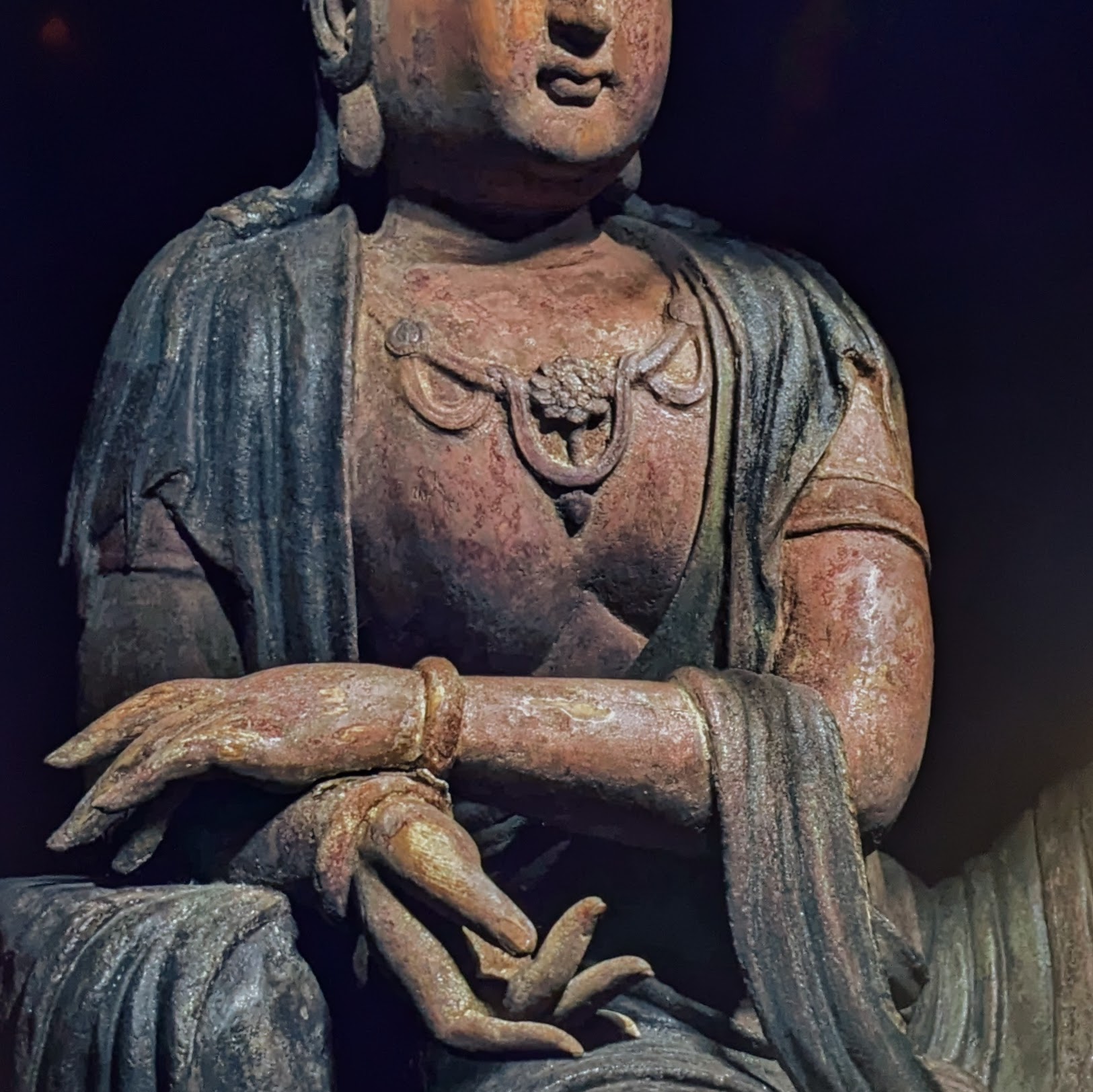Esoteric and serene by turns, this international collaboration re-interprets buddha statues

Shadow and Void: Buddha¹⁰ | esea contemporary | Jan 18th – April 20th
Reviewed by Joseph Hunter
I’ve seen a few buddhas in my time. In Japan a long time ago I saw the Great Buddha in Tōdai-ji, Nara, wide and matte-black, stern, looming high overhead through incense smoke and shimmering with light reflected off gold leaf. I saw the so-called Reclining Buddha in Wat Pho, Bangkok, long and limber and horizontal, its massive feet a stack of identical long, bulbous, phallic toes. And while halfway up a mountain in Cambodia on a moped, I rode past a buddha ten metres tall atop an angular pyramid plinth, garishly coloured like a paint-daubed ancient statue, looking for all the world like it had been moulded out of plastic, staring cross-eyed out towards a distant sea.
Not being a Buddhist myself, nor coming from a society in which buddha statues are a regular feature, I don’t want to speak out of turn. But it seems to me that, like renderings of Jesus, all those who attempt to capture the buddha’s likeness have in some way to wrestle with perhaps an insurmountable problem. How can you, a mortal, fallible artist, hope to create a likeness that approaches the serenity and transcendental calm of buddha?
The exhibition currently showing at esea contemporary is one step further removed from this challenge. It features works by several artists that take existing renderings of buddhas and reinterpret them in new forms. A collaboration between MAO (Museum of Asian Art) Turin and esea, the exhibition has just moved to Manchester from Italy.
The gallery space, as I enter, is rather like a void itself. It is dark, very warm, and close, lit only by ceiling spotlights and what light the multimedia artworks emit. The gallery is hung with long black banners that bear ghostly images of buddhas. These white, layered exposures are x-rays of statues, but my first impression of them as ghosts is what stays with me.
Sun Xun’s video installation, ‘Being is Negative’, is a vivid handheld encounter with buddha figures painted and carved, before the artist turns his own body into canvas and makes himself part of the jarring, esoteric collage. Across the room, Alexander Muner’s animated installation set within a small plaque is text-based, containing fragmented warnings against forgeries.
A stunning, human-sized lightbox in the form of a large tablet, or perhaps a glowing tombstone, draws me in. This is Wu Chi-Tsung’s ‘Drawing Study – MAO Bodhisattva Guanyin, Ming-Qing Dynasty’, for me the highlight of the exhibition. It shows a serene buddha, soft ochre-coloured, a chiaroscuro light moving slowly and silkily across its age-ambered surfaces. The statue, bathed in this creeping light, feels almost alive, or only lightly sleeping, despite being so still that its poise threatens to weave a spell over the viewer. When the slow silken light retreated and shadow covered the figure again, I felt a sense of loss.
Nearby, Shigeru Ishihara’s ‘Co-existence’, a white-curtained bier-like seat, low down, invited me to sit within its pale folds and be enveloped by the soundscape the wall-mounted speakers emit. I hovered for a while, but this piece was proving popular. The two people who had occupied it showed no signs of moving, so I drifted away towards the biggest installation in the room.
‘Moving Gods’, by LuYang, is a huge-screened video installation that struck me as being akin to a filmed cosplay performance. Various actors and dancers dressed as buddhas posed in garish groups, set within 3D-rendered temples. The effect is that of a psychedelic music video for a processed pop group you can’t get away from, and although its energy has some appealing aspects the whole thing seemed to me clumsy, silly, and remarkably po-faced for being so flamboyant.
For a palate cleanser, before leaving, I went back to ‘Co-existence’, which had now been vacated. The low rush mats of the bier were surprisingly comfortable and tactile, and I soon found myself lying down like a pampered prince. Elongated, metallic sound enveloped me, metallic, rumbling, as if I was actually inside one of the buddha sculptures, hearing the outside world filtered deep within its ancient body. I closed my eyes and imagined the rolling of the centuries as experienced from such a perspective. I didn’t have much luck, but I did feel a little peace settle on me. Perhaps that’s the key to the best buddha statues, and that for me is captured so well by Wu Chi-Tsing’s piece. They cannot embody serenity – that’s impossible – but they can point you towards it.
Reviewed by Joseph Hunter
